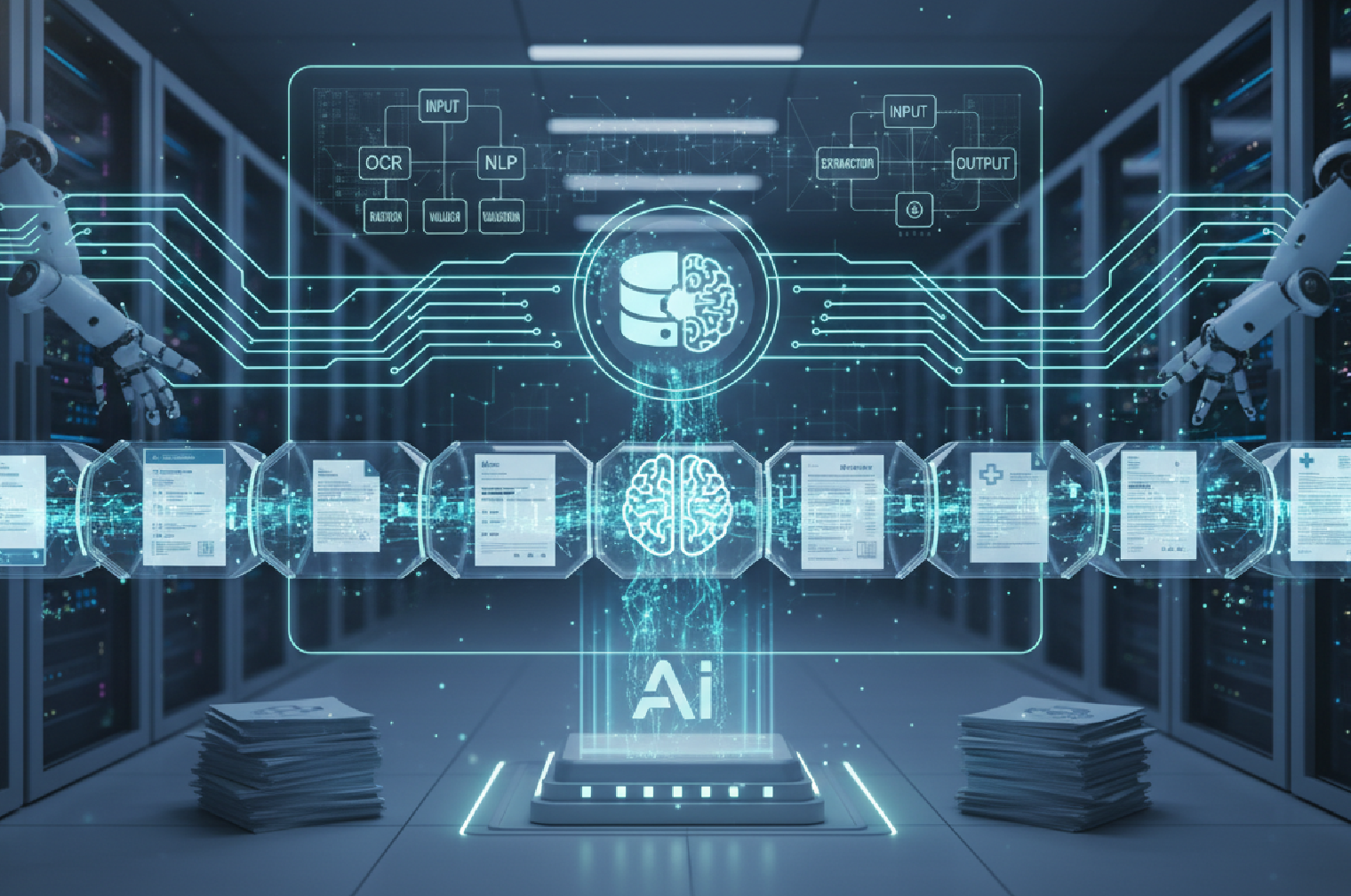Machine Learning and AI for revolution of Tech Companies are changing and streamlining businesses.
Now, with the advancement of technology, we have realized that system integration for energy and utilities is an operation necessity. The energy sector is experiencing drastic changes, with global renewable power capacity expected to grow by 2,400 GW by 2027—equivalent to China’s entire current power capacity.
As utilities navigate this complex transition, system integration for energy and utilities serves as the foundation for operational excellence, connecting disparate systems to create a cohesive, efficient infrastructure.
The integration of smart meters, renewable energy sources, and distributed energy resources demands a sophisticated approach to system integration that minimizes downtime, reduces costs, and ensures reliability in an increasingly decentralized grid. This strategic imperative is reshaping how energy companies operate, with effective system integration delivering measurable benefits across the entire utility value chain.
Why Is System Integration Important for Today’s Energy and Utilities Sector?
As stated, the energy system is growing increasingly complex, with generation, transmission, and distribution components often owned and operated by different entities. This fragmentation creates significant coordination challenges that only system integration for energy and utilities can effectively address.
The surge in prosumers and distributed energy resources (DERs) has further complicated operations, with DERs projected to account for 40-60% of grid capacity by 2030.
System integration addresses these complexities by:
- Coordinating complex systems across the energy value chain, enabling utilities to manage electricity flow while maintaining grid stability
- Increasing operational efficiencies through automation of processes, reducing time-consuming manual tasks
- Enabling better decision-making by providing an end-to-end, “big picture” view of operations through integrated data
- Improving customer service by integrating customer data with operational insights
- Supporting renewable energy integration through advanced forecasting and flexibility services
As the sector transitions from a centralized to a decentralized model, system integration becomes the crucial link that holds the entire ecosystem together.
Read: Blockchain in Energy and Utilities Sector: Benefits, Use Cases, and How it Increases Sustainability
Enhance Operational Efficiency with Expert System Integration
Discover how our System Integration for Energy and Utilities services streamline your operations, reduce downtime, and lower operational costs.
How Does System Integration Reduce Downtime in Energy and Utilities?
The cost of unplanned downtime in the energy sector has skyrocketed, with an hour’s downtime in oil and gas more than doubling in just two years to almost $500,000. For utilities, every minute of service interruption translates to dissatisfied customers and significant revenue loss. System integration for energy and utilities directly addresses this challenge by creating a more resilient and responsive infrastructure.
Industrial remote access solutions, a key component of system integration, enable faster reaction times when malfunctions occur. Instead of dispatching technicians to physical locations, problems can be diagnosed and often resolved remotely, dramatically reducing response times.
A common integration strategy involves connecting SCADA (Supervisory Control and Data Acquisition) systems with Advanced Distribution Management Systems (ADMS) and Advanced Metering Infrastructure (AMI).
This integration delivers:
- Improved outage management and fault detection
- Faster isolation and restoration of service
- Enhanced grid edge insights that prevent future failures
The results are compelling: digitization can reduce operating expenses by up to 25% and deliver performance gains of 20-40% in safety, reliability, and customer satisfaction.
What Are the Financial Benefits of Seamless Integration in the Energy Sector?
The financial impact of system integration for energy and utilities extends far beyond just reducing downtime costs. The Fortune Global 500 industrial organizations lose an estimated $1.5 trillion annually through unplanned downtime—representing 11% of these firms’ turnover.
By implementing effective system integration strategies, utilities can:
- Reduce maintenance costs significantly—some utilities have reported savings of $50 million within 18 months of digitization
- Decrease operational expenses by up to 25% through streamlined workflows and reduced data errors
- Optimize energy usage through integrated data analytics, leading to additional cost savings
- Reclassify data centers from capital to operational expenditures through hybrid cloud models, improving financial flexibility
Cloud-based system integration has demonstrated particularly impressive results, with German utility Powercloud’s SaaS solutions slashing billing expenses from €30 to €10 per user annually.
Achieve Seamless Integration for Uninterrupted Energy Services
Leverage our System Integration for Energy and Utilities expertise to ensure continuous service delivery and operational excellence.
Which Integration Technologies Are Revolutionizing Energy and Utilities Operations?
The technological foundation of system integration for energy and utilities continues to evolve, with several key innovations driving transformation:
Cloud Enablement has become a cornerstone of modern integration strategies. Infrastructure-as-a-Service (IaaS) dominates 43% of cloud spending in the sector, providing scalable storage for the massive data volumes generated by smart meters. Platform-as-a-Service (PaaS) solutions are growing at 11.7% CAGR, supporting custom grid analytics and outage prediction applications.
Smart Grid Optimization through integrated cloud solutions achieves 20-30% faster outage restoration via real-time sensor analytics and 15% efficiency gains in load balancing through AI/ML integration.
IoT and Predictive Maintenance systems are transforming asset management, with the predictive maintenance market projected to reach $47.8 billion by 2029. These systems collect and analyze sensor data in real time to identify potential failures before they occur, substantially reducing unplanned downtime.
System and application integration bridges specialized operational systems such as Automated Metering Infrastructure (AMI), Geospatial Information Systems (GIS), and Work Order Management (WOM) systems. This integration prevents data silos and delivers a more complete operational picture for better decision-making.
Check This Article for More Details: Cloud-Driven Digital Transformation in Energy and Utilities: A Strategic Guide
What Role Does AI Play in Modern System Integration for Energy and Utilities?
Artificial intelligence has become inseparable from advanced system integration for energy and utilities, delivering capabilities that transform how these organizations operate:
Predictive maintenance solutions use AI to anticipate equipment issues before they occur, which minimizes downtime and ensures peak performance. ViitorCloud’s AI solutions can predict transformer failures hours in advance, saving millions in potential downtime costs.
Generative AI models forecast energy demand with 95% accuracy, minimizing waste and optimizing resource allocation in an increasingly complex energy market.
AI-driven grid management systems leverage real-time data and analytics to identify patterns and react to changing conditions at speeds impossible for human operators. This capability is particularly valuable for integrating intermittent renewable energy sources like wind and solar.
Customer experience enhancement through AI-powered analytics provides utilities with deeper insights into customer needs and preferences, enabling more personalized service offerings.
Optimize Your Energy Operations with Tailored Integration Solutions
Implement our customized System Integration for Energy and Utilities to enhance performance and support your business growth.
How Are Renewable Energy Sources Reshaping Integration Needs?
The renewable energy transition is fundamentally changing system integration for energy and utilities requirements. In 2022, solar and wind generated a fifth of Europe’s electricity, with continued rapid growth expected.
This shift introduces new integration challenges:
Intermittent generation patterns from renewables require sophisticated forecasting and grid-balancing capabilities that only advanced integration can provide.
Distributed energy resources like rooftop solar and home batteries create a more complex network that requires bi-directional communication and coordination.
Peer-to-peer energy trading via blockchain platforms like Brooklyn Microgrid enables direct solar energy exchange between consumers, reducing transmission losses but requiring new integration approaches.
Edge computing deployments near wind farms and solar installations reduce data processing latency by 40%, which is critical for safety systems and real-time grid management.
Research from the Future Fuels CRC indicates that integrated electricity-gas-hydrogen systems offer significant economic and environmental benefits, particularly for developments combining renewable electricity and future fuels.
Also Read: Managed IT Services for Energy and Utilities: Ensuring Reliability and Scalability
Why Choose ViitorCloud as Your System Integration Partner?
ViitorCloud delivers comprehensive system integration for energy and utilities solutions that connect business applications and IT infrastructure seamlessly. Our expert integration services help organizations simplify operations and achieve digital excellence in the energy sector.
Our approach to enterprise system integration is characterized by thorough planning, years of experience, comprehensive post-development support, and flexible hiring models. We focus on delivering seamless, one-step solutions that address each client’s specific needs with bespoke, robust integration strategies.
Contact ViitorCloud for a free consultation and discover how our solutions can help you achieve greater efficiency, reduced downtime, and significant cost savings.
Experience Cost-Effective Innovation through Integrated Energy Systems
Partner with ViitorCloud to utilize System Integration for Energy and Utilities for sustainable and economical advancements.
Conclusion
System integration for energy and utilities has evolved from a technological nice-to-have into an essential strategic imperative. As the sector navigates increasing complexity, regulatory pressures, and the renewable energy transition, effective integration delivers the operational resilience and efficiency needed to thrive. By partnering with experienced integration experts like ViitorCloud, utilities can transform challenges into opportunities, reducing costly downtime while positioning themselves for success in an increasingly digital energy future.
SO GET IN TOUCH WITH OUR EXPERT NOW AT [email protected].









